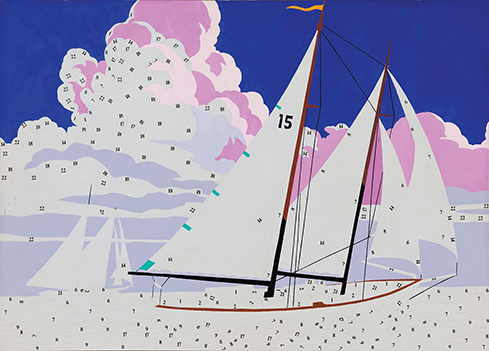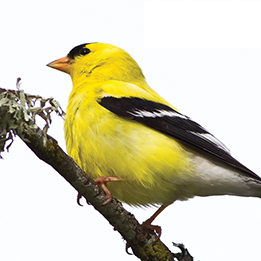 Fall 2016
Fall 2016|
Paint-By-Number Warhol
Even the museum that’s the global keeper of all-things- Andy-Warhol has a wish list of works to add to its collection. For years, Do It Yourself (Sailboats) has topped that list, and in June The Andy Warhol Museum’s wish came true. Painted in 1962, the same year Warhol painted his famous Campbell’s soup cans, Do It Yourself (Sailboats) is part of an early series of five works on canvas—a small number by Warhol standards. Based on the once-popular instructional paint-by-number kits, the series also includes a violin, a seascape, an autumn landscape, and flowers. The museum acquired the painting through a trade of five deaccessioned works from series in its collection that are already well represented.
An Appalachian Research hub
1,200+ Students
In April, the highest number of students since the Space Race era in 1962 competed in Carnegie Science Center’s 77th annual Covestro Pittsburgh Regional Science & Engineering Fair. One of the oldest and largest science fairs in the nation, it provides a remarkable $1 million in awards and scholarships.
Eric Shiner Departs The Warhol
Shiner joined The Warhol in 2008 as the Milton Fine Curator of Art and served as its director for the past five years. A popular and visible presence in the Pittsburgh art scene, he led The Warhol team in a number of key projects, including the massive 2014 rehang of the museum’s collection, telling the story of Warhol chronologically for the first time. Most recently, he was instrumental in bringing Chinese artist-activist Ai Weiwei to Pittsburgh for the opening of Andy Warhol | Ai Weiwei, which was organized by The Warhol in partnership with the National Gallery of Victoria and Ai Weiwei. “I hope to further promote the legacy of Andy Warhol, the father of contemporary art, in the market and beyond in my new position at Sotheby’s, while also creating new legacies for those that follow him,” Shiner said. “Warhol constantly blurred the lines between art and business in all that he did, and I trust that my own commitment to excellence in both spheres will serve me well in this new role.”
"This is a wonderful opportunity for the Carnegie to give [forgotten or overlooked] stories the platform they deserve. The entire community is pulling for this project and Ms. Luster’s success."
- Pittsburgh Post-Gazette Editorial Board on the May appointment of Dominique Luster, Carnegie Museum of Art’s first Teenie Harris Archivist to hold an endowed position, made possible by a $300,000 challenge grant by the National Endowment for the Humanities and the foundations and individuals who matched it.
A Moving Collection
As part of the first wave of museums to celebrate moving image work, in the 1970s and ’80s Carnegie Museum of Art and Pittsburgh played a central role in legitimizing film as an art form. Now that rich history can be mined in an online archive (http://records.cmoa.org/) devoted to the museum’s timebased media collection, which includes nearly 1,000 artworks. The website is the result of a generous grant from the Andrew W. Mellon Foundation for the care of, and research on, the museum’s collection of film, video, audio artworks, and related documentation. Founded in 1970 by Sally Dixon, a filmmaker herself, the museum’s film program helped establish Pittsburgh as a hotbed for independent experimental cinema. As one of the country’s first curators of avant-garde films, Dixon partnered with other organizations across the city to hone young professionals in the field and was among the first to pay artists sizeable honoraria, empowering them to make more work and encouraging them to do so in the city. It’s no surprise, then, that Dixon’s correspondence and ephemera are among the collection’s greatest treasures. Included are dozens of images of meetings, press conferences, and chat sessions that Dixon hosted in her office. “It’s a veritable who’s who of the film world,” wrote Kate Barbera, an archival assistant for the museum’s time-based media team. Also among the items the museum is most excited to share: more than 100 audio and video recordings of interviews and lectures with experimental moving image artists such as Stan Brakhage, Carolee Schneemann, James Broughton, and Stephen Beck.
|
Organizing Delirium · My Perfect, Imperfect Body · Body Boundaries · A Woman's World · LIGHTIME · President's Note · Face Time: Laura Micco · Artistic License: Making Some Noise · Travel Log · The Big Picture
 |
Copyright © 2017 CARNEGIE Magazine. All rights reserved. |






